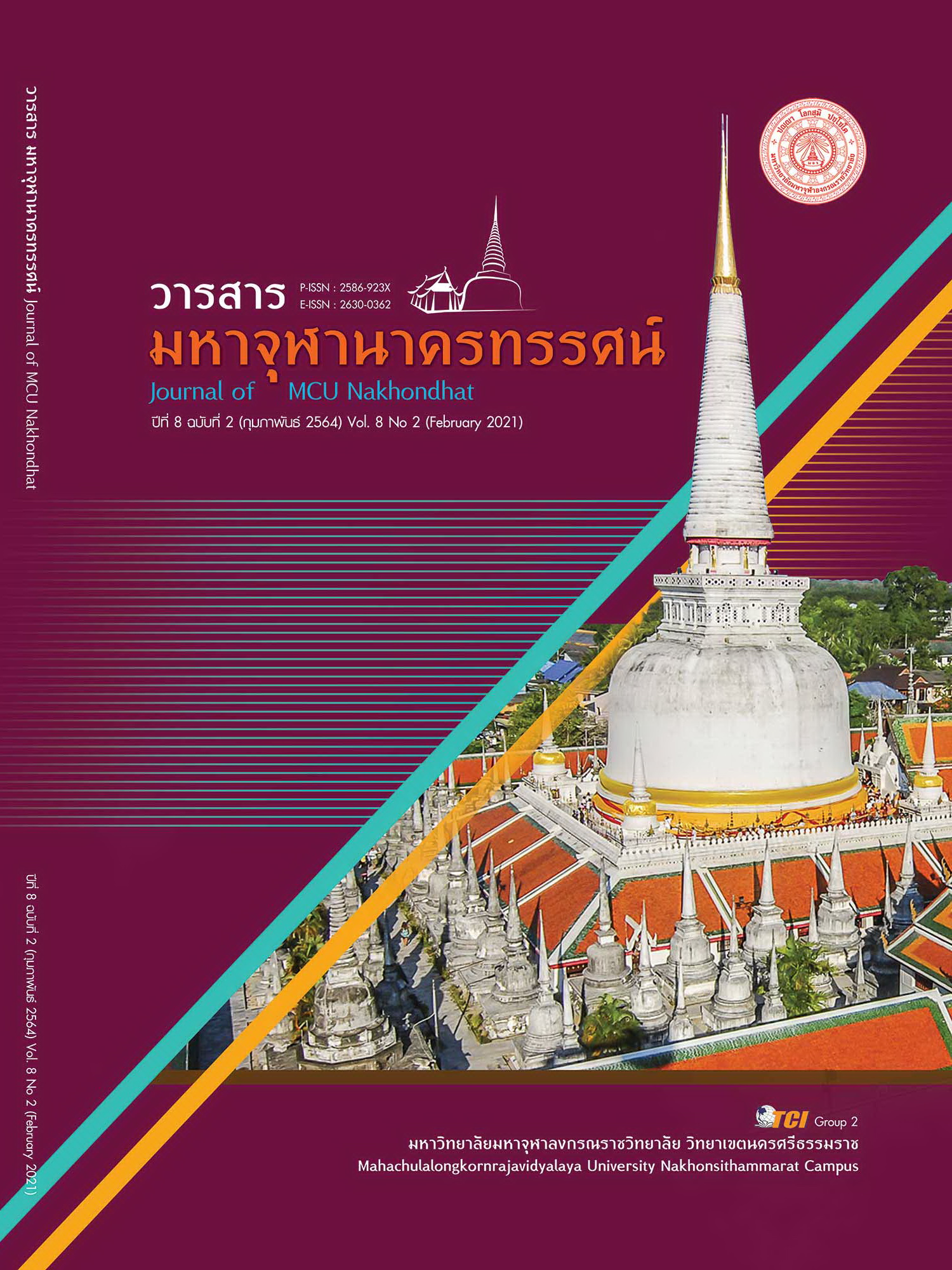EDUCATIONAL ADMINISTRATION STRATEGIES FOR VOCATIONAL AND HIGH SCHOOL CO - CURRICULUM PROGRAM (DUAL EDUCATION) OF THE SOUTHERN VOCATIONAL EDUCATION ADMINISTRATOR
Main Article Content
Abstract
The objectives of this research are 1) to study the current and future desirable conditions 2) to establish and verify the suitable authentic strategies 3) to use the Educational Administration Strategies for Vocational and High School Co - curriculum Program (Dual Education) of the Southern Vocational Education Administrator as the experiment to evaluate the efficiency of the feasibility and usefulness of the strategy. This research is the Mixed Methods Research. The population are the School Director and the Deputy, Chief of the curriculum, Chief of the Assessment Section. The sample,200 people, are determined based on the table of Krejcie and Morgan. The tools using for collecting data are Semi - Structured interview, and Questionnaire, the statistics used are the percentage and means. The results of the research found that 1) Educational Administration Strategies for Vocational and High School Co - curriculum Program (Dual Education) are consisted of 7 strategies, namely : 1.1) Analyzing the types of subject and works 1.2) Curriculum determination 1.3) Learning Management 1.4) Measurement and Assessment 1.5) Grade Transferring 1.6) Vocational Standard Assessment 1.7) Graduation. 2) examination results of validity, suitability, feasibility, and usefulness of the strategy by the expert found that it is suitable and possible at the highest level. 3) When implementing strategies Overall, the strategy's feasibility level was the average ( = 4.85) The overall benefit of the strategy is highest (
= 4.92).
Article Details
References
กองพัฒนาพฤตินิสัย. (2562). สถิติผู้เรียนสายสามัญ/วิชาชีพ/อุดมศึกษา. เรียกใช้เมื่อ 15 ธันวาคม 2563 จาก: http://br.correct.go.th/br_wp/?p=3099
เชี่ยวชาญ ดวงใจดี. (2562). แนวปฏิบัติในการบริหารจัดการหลักสูตรทวิศึกษาการเรียนร่วมอาชีวศึกษาและมัธยมศึกษาตอนปลาย. วารสารการบริหารการศึกษามหาวิทยาลัยศิลปากร, 10(1), 581-595.
ปรีชา ดาวเรือง. (2561). กลยุทธ์การจัดการศึกษาสู่ความเป็นเลิศของสถานศึกษาเอกชนในภาคตะวันออกเฉียงเหนือตอนล่าง. วารสารนครราชศรีมา, 12(1),47-61.
พรเทพ สรนันท์. (2556). การพัฒนารูปแบบการบริหารงานวิชาการมหาวิทยาลัยเทคโนโลยีราชมงคลสุวรรณภูมิ. วารสารครุศาสตร์, 41(3),173-185.
สถาบันทดสอบทางการศึกษาแห่งชาติ (องค์การมหาชน). (2562). ผลการทดสอบทางการศึกษาระดับชาติด้านอาชีวศึกษาประจำปีการศึกษา 2562. เรียกใช้เมื่อ 25 เมษายน 2562 จาก: https://www.niets.or.th/th/
สำนักงานคณะกรรมการการอาชีวศึกษา. (2561). สถานศึกษาอาชีวศึกษาภาครัฐสังกัดสำนักงานคณะกรรมการการอาชีวศึกษา. เรียกใช้เมื่อ 22 เมษายน 2562 จาก: http://www.vec.go.th
สำนักงานสภาพัฒนาการเศรษฐกิจและสังคมแห่งชาติ. (2561). ยุทธศาสตร์ชาติ 20 ปี. เรียกใช้เมื่อ 6 เมษายน 2563 จาก: http://nscr.nesdb.go.th/ยุทธศาสตร์ชาติ/
สำนักมาตรฐานการอาชีวศึกษาและวิชาชีพ. (2561). เอกสารประกอบการปฏิบัติงานการจัดการศึกษาร่วมหลักสูตรอาชีวศึกษาและมัธยมศึกษาตอนปลาย(ทวิศึกษา). เรียกใช้เมื่อ 22 เมษายน 2562 จาก: http://bsq2.vec.go.th/document/doc3.html


